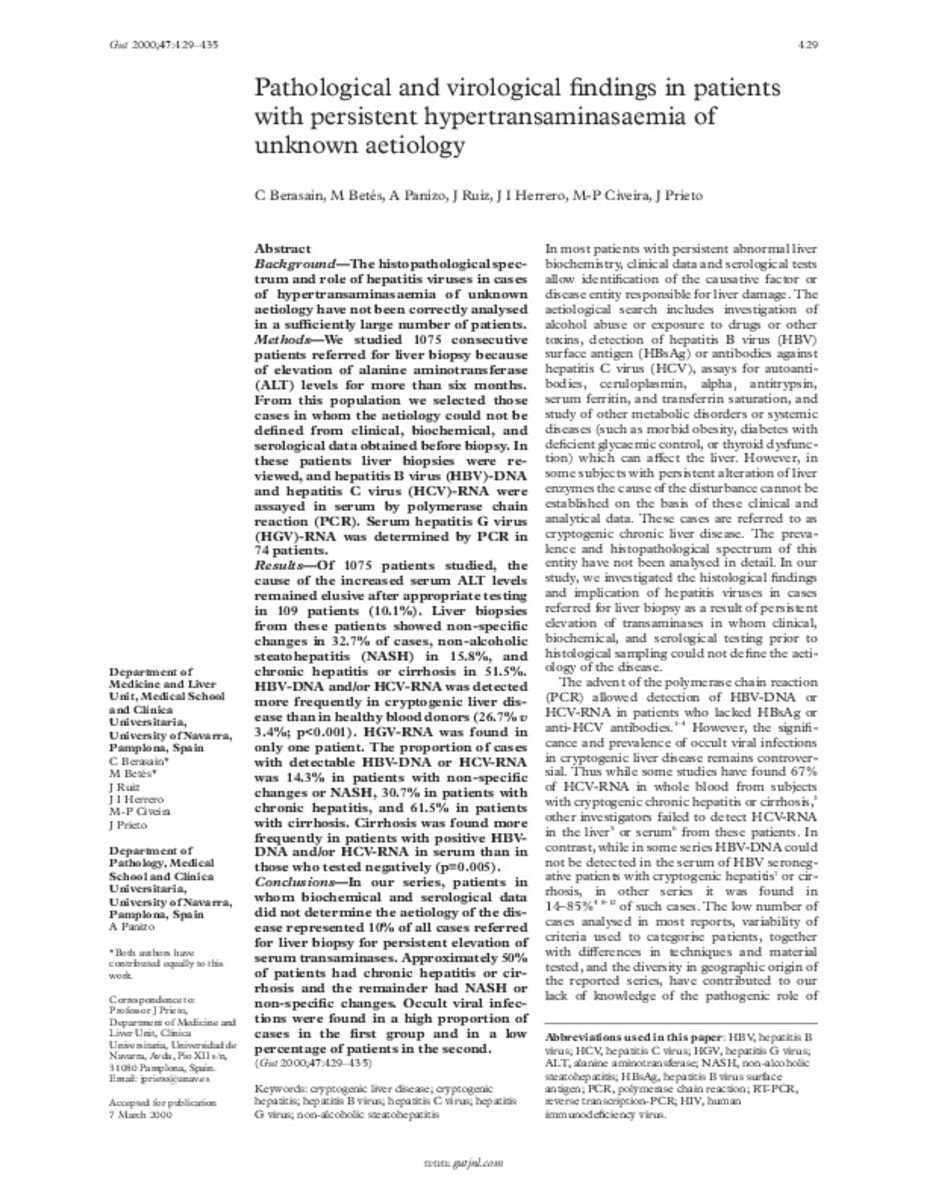Pathological and virological findings in patients with persistent hypertransaminasaemia of unknown aetiology
Keywords:
Cryptogenic liver disease
Cryptogenic hepatitis
Hepatitis B virus
Hepatitis C virus
Hepatitis G virus
Non-alcoholic steatohepatitis
Publisher:
BMJ Publishing Group
Citation:
Berasain C, Betes M, Panizo A, Ruiz J, Herrero JI, Civeira MP, et al. Pathological and virological findings in patients with persistent hypertransaminasaemia of unknown aetiology. Gut 2000 Sep;47(3):429-435.
Statistics and impact
0 citas en

0 citas en

Items in Dadun are protected by copyright, with all rights reserved, unless otherwise indicated.








